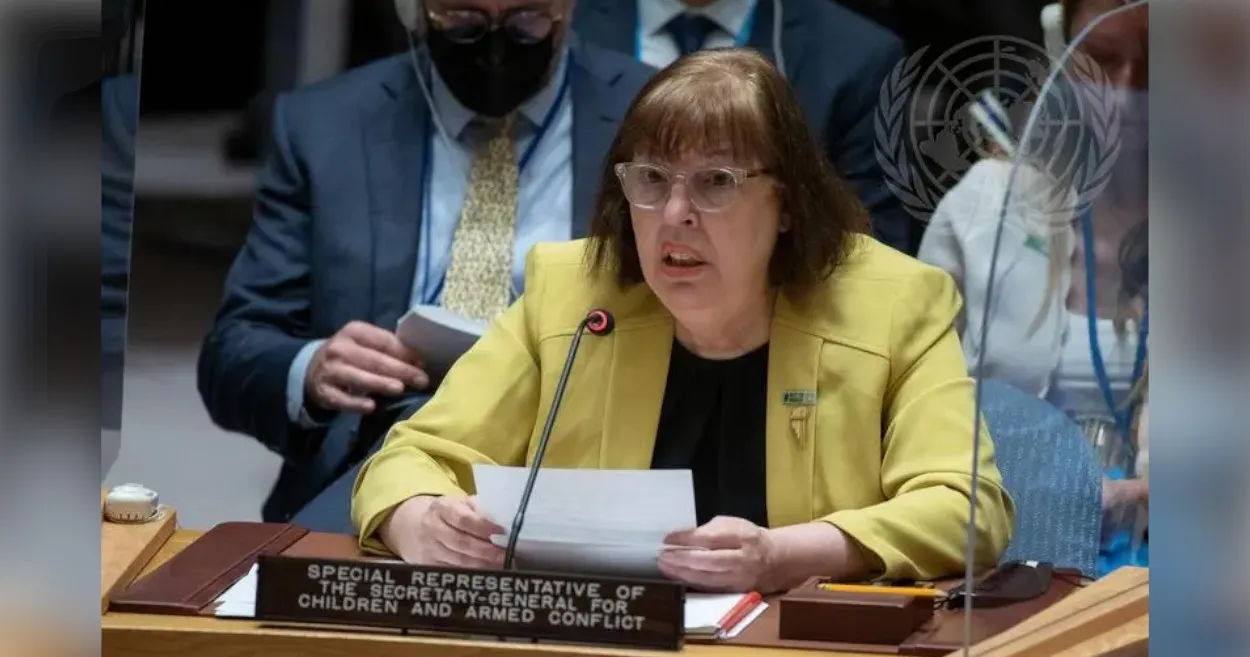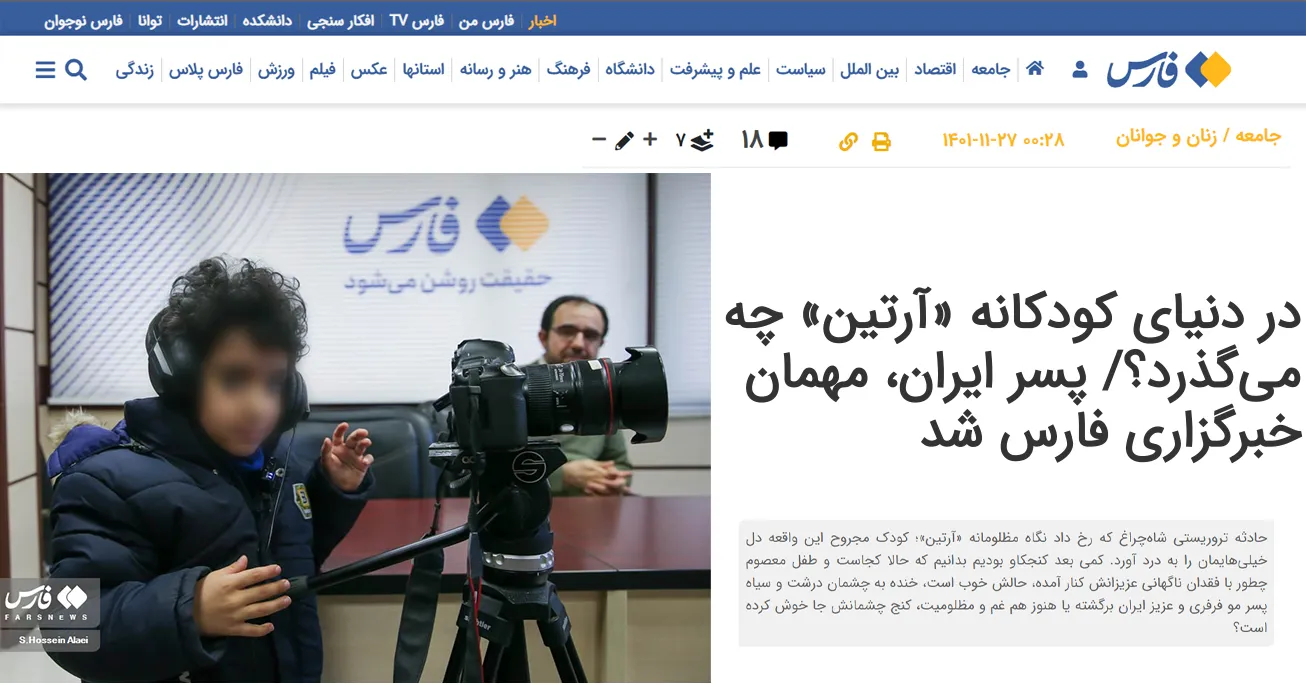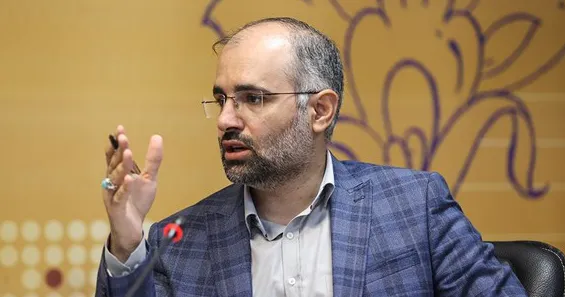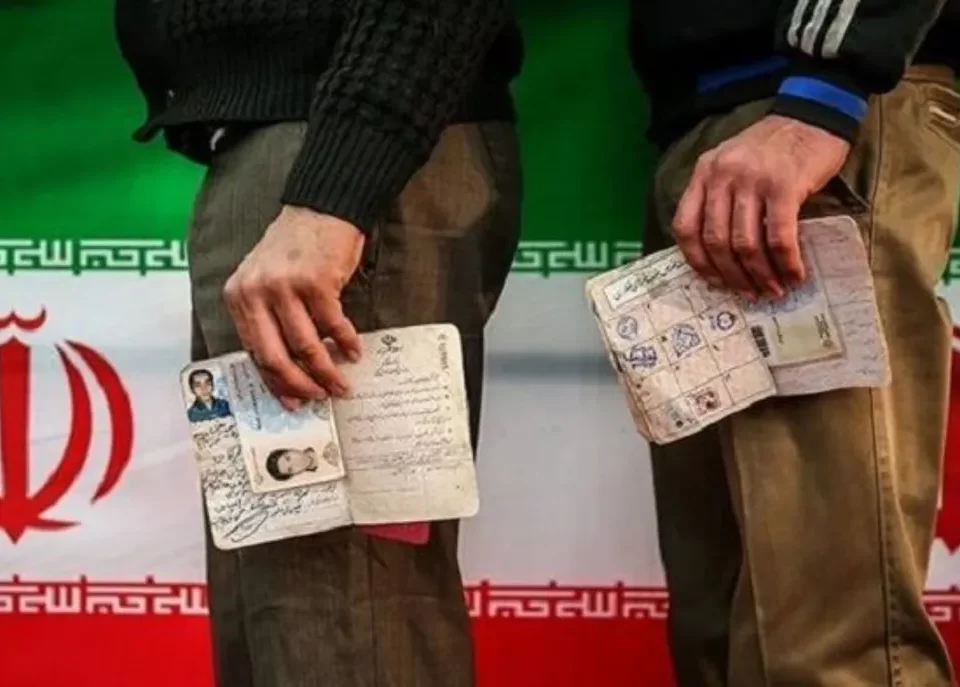
Media Review: IRNA and Fake News in the Name of the United Nations Representative
May 5, 2023
Media review; Fars news agency and immoral celebrityization of Artin
May 5, 2023Having the intention to spread lies and tactically using fake news completely changes the nature of the act. Sometimes media outlets or social media users unknowingly and unintentionally share false information with others, but some intentionally publish and disseminate news knowing it to be false. The former is called “misinformation” and the latter is called “disinformation.” Misinformation is a natural occurrence and can happen inadvertently in the process of information dissemination, with the person sharing it believing they are conveying accurate information. Such errors are not uncommon in media work. However, in disinformation, the party knowingly spreads falsehoods and deliberately engages in this activity to harm an individual, a social group, or a country, sometimes even using it as a tactic for information warfare. It is important for us as recipients to understand the difference between these two and know how to identify disinformation and not be deceived by it.
Before delving into the methods of identifying disinformation, let’s take a look at this report from the Tasnim News Agency, which was published on March 14, 2023, under the title “The New Game of Hypocrites with the Card of Mir Hossein Mousavi.” This serves as a good and clear example for recognizing disinformation.
The report states:
The hypocritical group, in order to remain relevant amidst the competition with other anti-revolutionary groups abroad, is preparing a charter through the intermediary of “Ardeshir Amirarjmand” to be announced in the name of Mir Hossein Mousavi.
According to reliable sources, after the issuance of the despicable charter by the “Mosi” team [Masiheh Alinzhad] and “Pahlavi” and “Komoleh” and their partners, the terrorist hypocrite group, in competition with that team, has begun drafting a charter with the participation of the so-called “Fedayeen Khalq Cherik” and the separatist ethnic groupings such as the disbanded “Democratic” Party and “Khoubat” and “Arab People” and “Pak,” and so on. On the other hand, the Marxist left-wing movement, consisting of the so-called “Fedayeen” and the “Republican Unity” and a part of the “National Front Abroad,” published a charter last week. In addition, the terrorist hypocrite group has informed Ardeshir Amirarjmand, the agent of that group and a senior advisor to one of the leaders of the 88 sedition, to draft another charter, especially the “Pahlavi, Komoleh, and their partners” charter, to be published in the name of Mir Hossein Mousavi, following the previous pattern.
According to this report, Ardeshir Amirarjmand has been tasked with drafting the desired text of the hypocrite group within the framework provided and has conveyed it to Mir Hossein Mousavi through internal channels (Mousavi’s daughters) to inform him and also to inform two anti-security prisoners located in Evin Prison so that they support the charter. The main content of the induced charter for Mir Hossein Mousavi is to intensify the violation of the Islamic Republic’s constitution and take another step towards the strategy of overthrowing it.
First: We need to understand why this news is fake.
Regardless of the content of the published information, from a media literacy perspective, the following characteristics can indicate fake news:
Information without a source or without a credible source.
Published information lacking credibility due to the absence of documentation by the media.
Published information without the author’s name and the source’s reliability being unclear.
Biased information.
Information that has not been confirmed by other sources of information.
Therefore, it can be said that the report from Tasnim News Agency is a clear example of fake news because it lacks a source, and the identity of the author is also unclear. Tasnim News Agency is a media outlet affiliated with the Islamic Revolutionary Guard Corps and part of the government propaganda apparatus. The author also mentions “reliable sources” without specifying who these sources are. All these shortcomings indicate the falseness of this report.
Second: How do we know if this news is disinformation or misinformation?
As mentioned earlier, the difference between disinformation and misinformation lies in the deliberate, tactical, and purposeful dissemination of false information. If we consider this fake report as accidental, unintentional, and without evaluation, we can label it as misinformation. However, such an assessment of this report goes against reality. To determine whether this report is a case of disinformation or not, follow these five steps:
Step 1: Analyze the content and the publishing media
Is Tasnim News Agency an impartial media outlet that upholds principles of accuracy and reliability in its reporting? Tasnim News Agency, as a government-affiliated media outlet, has previously shown bias against the “Green Movement” and its leaders, such as Mir Hossein Mousavi, “Zahra Rahnavard,” and “Mehdi Karroubi.” Therefore, we know that this media outlet has a bias against Mir Hossein Mousavi, and the information it publishes is not impartial and accurate. The nature of the published information is also contrary to the previous behavior and policies of Mir Hossein Mousavi.
Step 2: Can the content be misinformation?
If you have doubts about whether the published fake content is misinformation or disinformation, look at whether it attacks someone or aims to undermine an individual, group, organization, or country.
Step 3: Analyze the hidden motives behind the published information
What could be the underlying motive behind this report? Does the media or the user publishing it have any benefit from spreading fake news or causing harm to someone?
Step 4: Check other sources of information
Have other information sources published this news, and could an independent media outlet possibly have published such a story?
Step 5: How much do the information impact the audience’s beliefs?
Has an effort been made to mislead the audience and influence their beliefs and mindset?
Disinformation is not always obvious. Sometimes, media outlets act in a more complex way to prevent the audience from easily recognizing the received information as fake and disinformation. However, Tasnim News Agency has not taken the trouble to do so and presents a fake and imaginative report as real to the audience without concern for its credibility.
Fake news in itself can cause irreparable damage to society and put many lives at risk. However, when fake news is used deliberately and tactically, it is no longer just a simple dissemination of lies.
Media outlets or users disseminating misinformation are classified as harmful and dangerous media. They undermine the freedom, development, progress, and public order of society, so we should not be indifferent to them.
The most important way to counter dangerous media is to refrain from sharing their content and report them as hosts of disinformation campaigns, so that others know what kind of media they are dealing with. Let’s protect ourselves and others against misinformation by practicing critical thinking and being sensitive to fake news.
مرور رسانهها؛ خبرگزاری تسنیم و جنگ اطلاعاتی تازه با میرحسین موسوی
داشتن تعمد در دروغپراکنی و استفاده تاکتیکی از خبر جعلی، ماهیت عمل را به کلی تغییر میدهد. گاهی رسانهها یا کاربران شبکههای اجتماعی ناآگاهانه و بدون قصد و غرض، دروغی را با دیگران به اشتراک میگذارند ولی برخیها با علم به دروغ بودن یک خبر و با برنامه آن را نشر میدهند. اولی را «میساینفورمیشن» و دومی را «دیساینفورمیشن» خواندهاند. میساینفورمیشن امری طبیعی است و در کار اطلاعسانی میتواند سهوا اتفاق افتد و فرد منتشر کننده این تصور را دارد که اطلاعات درستی را به جامعه منتقل میکند. چنین خطایی در کار رسانهای عجیب و بعید نیست. ولی در دیساینفورمیشن، طرف میداند دروغپراکنی میکند و عامدانه این کار را به منظور آسیب رساندن به یک فرد، یک گروه اجتماعی یا یک کشور انجام میدهد و گاهی حتی از آن به صورت تاکتیکی، برای جنگ اطلاعاتی استفاده میکند. مهم این است که به عنوان مخاطب، تفاوت این دو را بدانیم و بدانیم چهگونه دیساینفورمیشن را شناسایی کنیم و فریب آن را نخوریم.
قبل از ورود به چگونگی تشخیص دیساینفورمیشن، به این گزارش خبرگزاری «تسنیم» که روز ۲۳ اسفند ۱۴۰۱ با عنوان «بازی جدید منافقین با کارت میرحسین موسوی» منتشر شده است، نگاه کنید. این یک نمونه خوب و واضح برای شناخت دیساینفورمیشن است.
در این گزارش آمده است:
- گروهک منافقین برای جا نماندن از رقابت منشوری با دیگر گروهکهای ضدانقلاب در خارج از کشور، در حال تهیه یک منشور با واسطهگری «اردشیر امیرارجمند» است تا این منشور به نام میرحسین موسوی اعلام شود.
- بر اساس اخبار موثق، پس از صدور منشور سخیف تیم «مصی» [مسیح علینژاد]و «پهلوی» و «کومله» و شرکا، گروهک تروریستی منافقین در رقابت با آن تیم، شروع به تدوین منشوری با مشارکت به اصطلاح «چریکهای فدایی خلق» و مجموعه تجزیهطلبان قومی همچون حزب منحله «دمکرات» و «خُبات» و «خلق عرب» و «پاک» و… کرده است. از سوی دیگر، جریان چپ مارکسیستی متشکل از به اصطلاح «فداییان» و «اتحاد جمهوری خواهان» و بخشی از «جبهه ملی خارج از کشور» در هفته گذشته منشوری منتشر کردند. علاوه بر اینها، گروهک تروریستی منافقین به اردشیر امیرارجمند، عامل آن گروهک و مشاور ارشد یکی از سران فتنه ۸۸ ابلاغ کرده است برای تحتالشعاع قرار دادن منشورهای پیش گفته، بهویژه منشور «پهلوی، کومله و شرکا»، منشور دیگری تدوین کند تا طبق روال گذشته، به نام میرحسین موسوی منتشر شود.
- بنا بر این گزارش، اردشیر امیرارجمند متن مورد نظر گروهک منافقین را در چارچوب ابلاغ شده تدوین و از طریق سرپلهای داخلی (دختران موسوی) به اطلاع وی و نیز به آگاهی دو زندانی ضدامنیتی مستقر در زندان اوین رسانده تا از منشور حمایت کنند. محتوای اصلی منشور القایی به میرحسین موسوی، تشدید خط عبور از قانون اساسی جمهوری اسلامی و گامی دیگر به سوی راهبرد براندازی است.
اول: باید بدانیم چرا این خبر جعلی است؟
فارغ از محتوای اطلاعات منتشره، از منظر سواد رسانهای، اطلاعات زیر میتوانند مصداق خبر جعلی باشند:
- اطلاعات بدون منبع یا بدون منبع معتبر
- اطلاعات منتشره بدون سند توسط رسانه فاقد اعتبار
- اطلاعات منتشره بدون مشخص بودن نام نویسنده و رای اطلاعات
- اطلاعات جانبدارانه
- اطلاعاتی که صحت آن توسط سایر منابع اطلاعاتی تایید نشدهاند
از این رو میتوان گفت گزارش خبرگزاری تسنیم مصداق بارز یک خبر جعلی است، چراکه خبر منتشره منبع ندارد، هویت نویسنده آن هم روشن نیست. خبرگزاری تسنیم نیز رسانهای وابسته به سپاه پاسداران انقلاب اسلامی و بخشی از دستگاه پروپاگاندا حکومت است. نویسنده نیز مطلب را به نقل از «اخبار موثق» آورده است ولی نمیگوید این منبع کیست. همه ایرادات وارده به این مطلب، بر جعلی بودن این گزارش دلالت دارند.
دوم: از کجا بدانیم که این خبر جعلی، مصداق دیس یا میس اینفورمیشن است؟
همانطور که در بالا آمد، تفاوت دیس یا میس بودن این اینفورمیشن، در آگاهانه، تاکتیکی و هدفمند بودن انتشار اطلاعات جعلی است. اگر این گزارش جعلی را اتفاقی، سهوی و بدون برنامه ارزیابی کنیم، میتوانیم آن را میساینفورمیشن بخوانیم. ولی چنین ارزیابی از این گزارش، خلاف واقعیت است. برای این که بدانید این گزارش مصداق دیساینفورمیشن هست یا خیر، این پنج گام را بردارید:
گام اول: محتوا و رسانه ناشر را تحلیل کنید
آیا تسنیم رسانهای بیطرف است و اصل صداقت و دقت را در اطلاعرسانی رعایت میکند؟ خبرگزاری تسنیم به عنوان رسانهای حکومتی، پیشتر در گزارشهای متعدد، عناد خود را به «جنبش سبز» و رهبران آن، یعنی میرحسین موسوی، «زهرا رهنورد» و «مهدی کروبی» نشان داده است. بنابراین، ما میدانیم که این رسانه نسبت به میرحسین موسوی بغض دارد و اطلاعاتی که منتشر میکند، بیطرفانه و دقیق نیست. ماهیت اطلاعات منتشره نیز خلاف سابقه و رویه میرحسین موسوی است.
گام دوم: آیا محتوا میتواند میساینفورمیشن باشد؟
اگر تردید دارید که محتوای جعلی منتشره میس یا دیس اینفورمیشن است، نگاه کنید که آیا به کسی حمله شده و آیا در جهت تخریب یک فرد، گروه، سازمان یا کشور است؟
گام سوم: اهداف پنهانی اطلاعات منتشره را تجزیه و تحلیل کنید
چه هدفی میتواند پشت این گزارش باشد؟ آیا رسانه یا کاربر منتشر کننده میتواند منفعتی در جعل خبر داشته باشد یا آسیبی به کسی وارد کند؟
گام چهارم: سایر منابع اطلاعاتی را چک کنید
آیا سایر منابع اطلاعاتی این خبر را منتشر کردهاند و آیا رسانهای مستقل ممکن است چنین خبری را منتشر کرده باشد؟
گام پنجم: اطلاعات چهقدر بر باور مخاطب تاثیر دارند؟
آیا تلاشی برای گمراه کردن مخاطب و تحت تاثیر دادن باورها و ذهنیت او انجام شده است؟
دیساینفورمیشن همیشه به این عیانی نیست. گاهی رسانهها پیچیدهتر عمل میکنند تا مخاطب به سادگی نتواند تشخیص دهد که اطلاعات دریافتی جعلی و دیساینفورمیشن هستند. ولی خبرگزاری تسنیم به خود زحمت این کار را نداده است و یک گزارش جعلی و تخیلی را به عنوان گزارش واقعی به مخاطب ارایه میکند، بدون آن که نگران اعتبار خود باشد.
خبر جعلی به خودی خود میتواند صدمات جبران ناپذیری به جامعه وارد کند و زندگی بسیاری را به مخاطره انداز.، ولی وقتی خبر جعلی آگاهانه و تاکتیکی مورد استفاده قرار میگیرد، دیگر تنها یک دروغ پراکنی ساده نیست.
رسانهها یا کاربران منتشر کننده دیس اینفورمیشن، در ردیف رسانه مضر و خطرناک قرار میگیرند. آنها مخل آزادی، توسعه، پیشرفت و نظم عمومی جامعهاند، لذا نباید نسبت به آنها بیتفاوت بود.
مهمترین راه مقابله با رسانههای خطرناک، پرهیز از به اشتراک گذاشتن محتوای آنها و گزارش کردن آنها به عنوان میزبانان کمپینهای دیس اینفورمیشن است تا دیگران بدانند با چه رسانهای مواجه هستند.
با تفکر انتقادی و حساس بودن نسبت به خبر جعلی، از خود و دیگران در برابر دیساینفورمیشن محافظت کنیم.




